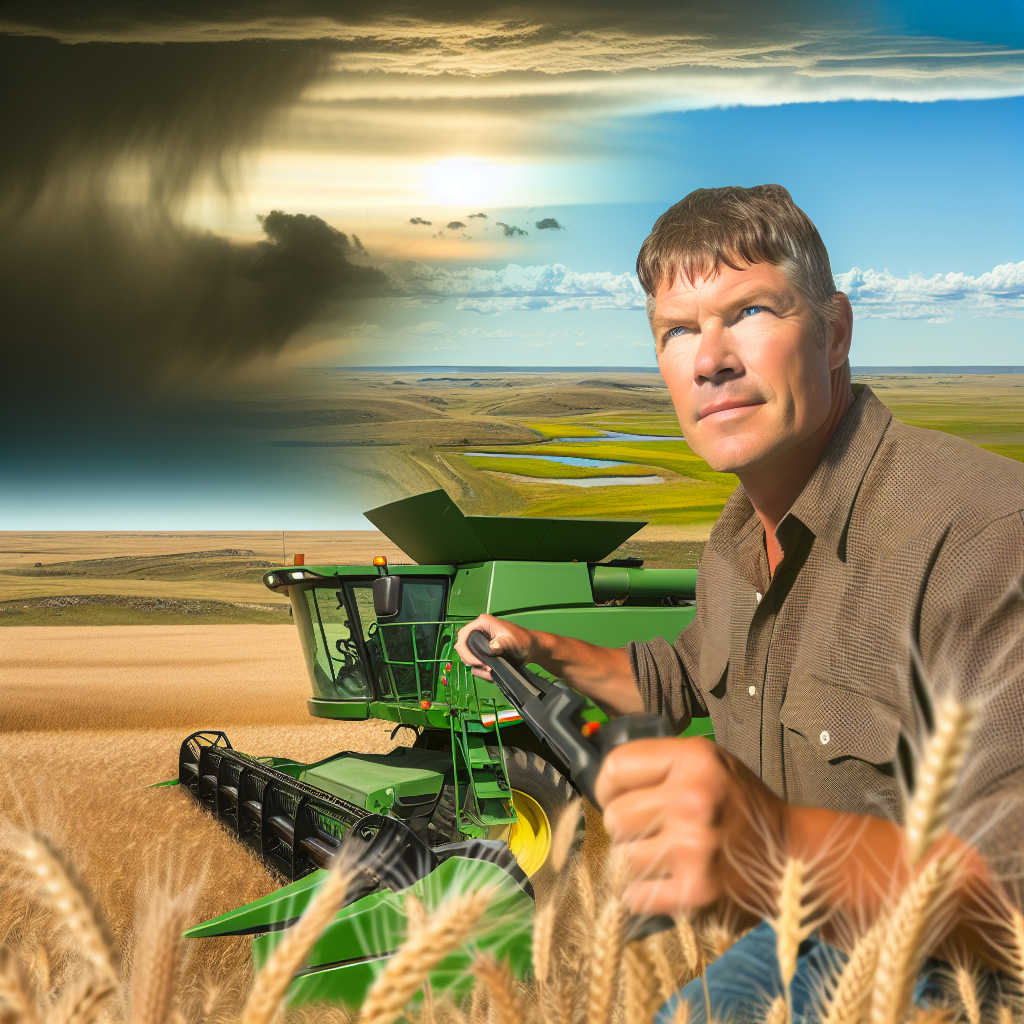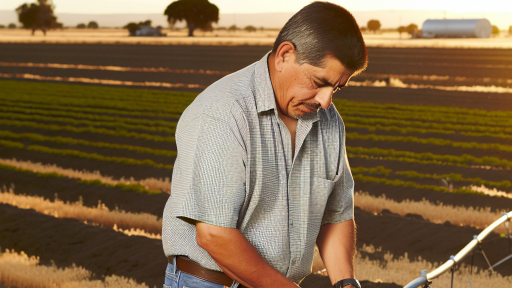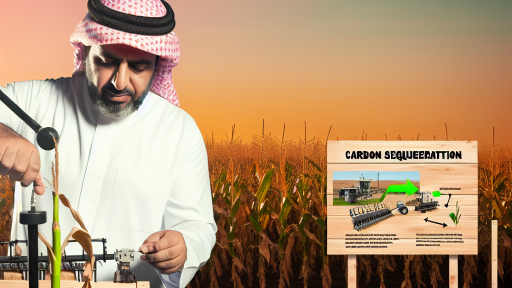Introduction to Climate Change and Agriculture
Climate change significantly impacts agriculture worldwide.
Farmers face challenges such as unpredictable weather patterns.
Rising temperatures and changing precipitation affect crop yields.
Additionally, pests and diseases thrive in warmer climates.
Water scarcity has become a pressing concern in many regions.
These factors threaten food security for millions of people.
Moreover, farmers must adapt their practices to survive.
In response, agriculture is evolving with innovative methods.
The Importance of Adaptation
Adapting to climate change is essential for sustainability.
Farmers need to implement strategies that mitigate risks.
This requires understanding local conditions and challenges.
Climate-resilient practices enhance agricultural productivity.
Furthermore, these methods reduce environmental impact.
Investing in Technology
Technology plays a crucial role in modern agriculture.
Precision farming helps optimize resource use effectively.
Transform Your Agribusiness
Unlock your farm's potential with expert advice tailored to your needs. Get actionable steps that drive real results.
Get StartedFarmers can use data analytics for informed decision-making.
Innovations like drought-resistant crops are emerging trends.
Moreover, automated systems can manage operations efficiently.
Promoting Sustainable Practices
Sustainable farming practices combat climate change effects.
Crop rotation improves soil health and reduces pests.
Cover crops enhance soil structure and nutrient retention.
Additionally, agroforestry systems provide multiple benefits.
These methods foster biodiversity while ensuring productivity.
Community and Collaboration
Community involvement is vital for successful adaptation.
Farmers benefit from sharing knowledge and resources.
Local co-operatives can support sustainable initiatives.
Collaboration with researchers fosters innovative solutions.
Furthermore, agricultural organizations offer educational programs.
Understanding the Impact of Climate Shifts on Crop Production
Shifts in Weather Patterns
Climate shifts alter traditional weather patterns significantly.
This leads to unexpected droughts or excessive rainfall.
Crop yields become unpredictable due to these changes.
Farmers face increased challenges in planning their planting schedules.
Weather forecasting techniques must adapt to these new patterns.
Temperature Variability
Rising temperatures can stress crops during critical growth phases.
Sensitive varieties may fail to produce under extreme heat.
Additionally, increased heat may worsen pest infestations.
Farmers must select resilient crop varieties to combat this issue.
Shifting planting dates can also help mitigate temperature effects.
Soil Degradation
Climate change can lead to soil erosion and nutrient loss.
Showcase Your Farming Business
Publish your professional farming services profile on our blog for a one-time fee of $200 and reach a dedicated audience of farmers and agribusiness owners.
Publish Your ProfileHeavy rainfall often washes away topsoil, impacting productivity.
Innovative soil management practices become essential in these conditions.
Cover cropping and conservation tillage help retain soil health.
Farmers are encouraged to adopt sustainable land practices.
Water Scarcity
Changing climate patterns contribute to water shortages.
Efficient irrigation techniques are crucial for crop survival.
Implementing drip irrigation can conserve precious water resources.
Farmers should also explore rainwater harvesting options.
Awareness of water usage and management plays a vital role in adaptation.
Pest and Disease Dynamics
Climate shifts can expand the range of pest populations.
Increased humidity may foster the spread of crop diseases.
Farmers must monitor pest activity closely as conditions change.
Integrated pest management strategies become even more relevant.
Early intervention can prevent significant crop loss.
Implementing Sustainable Farming Practices
Understanding Sustainable Farming
Sustainable farming focuses on environmentally-friendly agricultural practices.
These practices prioritize resource conservation and biodiversity.
Furthermore, they aim to minimize harmful effects on the environment.
Soil Health Management
Healthy soil is the foundation of successful farming.
Farmers should implement crop rotation to enhance soil nutrients.
Additionally, using cover crops prevents soil erosion and enhances fertility.
Water Conservation Techniques
Efficient water use is vital for sustainable farming.
Farmers can adopt drip irrigation systems for targeted watering.
Rainwater harvesting is another effective strategy to conserve water.
Integrated Pest Management
Reducing chemical pesticide use is crucial for sustainable agriculture.
Integrated pest management employs biological control methods.
This approach balances pest control with environmental health.
Agroforestry Practices
Agroforestry integrates trees into agricultural landscapes.
This practice improves biodiversity and enhances crop yields.
Moreover, it helps in sequestering carbon and combating climate change.
Community Involvement
Engaging local communities can strengthen sustainable practices.
Farmers can collaborate with local organizations for resource sharing.
Community-supported agriculture (CSA) encourages consumer participation.
Technology in Sustainable Farming
Embracing technology can lead to more efficient farming methods.
Precision agriculture utilizes data to enhance crop productivity.
Drones and sensors monitor crop health and optimize inputs.
Policy Support and Education
Government policies can facilitate sustainable farming practices.
Subsidies for eco-friendly practices encourage farmers to adapt.
Education programs increase awareness of sustainable methods.
You Might Also Like: Rainwater Harvesting Strategies for Modern Farms
Adopting Crop Rotation and Diversification Strategies
Understanding Crop Rotation
Crop rotation involves changing the type of crops grown in a specific area over time.
Showcase Your Farming Business
Publish your professional farming services profile on our blog for a one-time fee of $200 and reach a dedicated audience of farmers and agribusiness owners.
Publish Your ProfileThis practice improves soil health and fertility by disrupting pest cycles.
Additionally, it helps in managing weeds more effectively.
Farmers can choose crops based on their nutrient needs and growth patterns.
For instance, rotating legumes can enhance nitrogen content in the soil.
Benefits of Diversification
Diversification refers to cultivating a variety of crops within the same farming system.
This method reduces the risks associated with crop failure due to climate variability.
Moreover, it creates a more resilient farming ecosystem.
Farmers can benefit from different market opportunities by diversifying their crops.
This strategy often leads to increased farm income and sustainability.
Implementing Integrated Pest Management (IPM)
IPM combines various management practices to control pests effectively.
Crop rotation plays a crucial role in this approach by preventing pest establishment.
Farmers can also use beneficial insects to manage pest populations naturally.
This method minimizes the need for chemical pesticides, promoting environmental health.
Ultimately, IPM enhances crop productivity and farm sustainability.
Choosing the Right Crop Combinations
Selecting appropriate crop combinations is vital for successful rotation and diversification.
Farmers should consider compatibility based on growth cycles and nutrient requirements.
Some complementary crops can support each other’s growth.
For example, planting corn alongside beans can maximize resource use.
This practice extends growing seasons and optimizes land use.
Find Out More: Farmers’ Climate Change Adaptation Cheat Sheet
Utilizing Precision Agriculture Technologies
Definition and Importance
Precision agriculture employs advanced technologies for efficient farming.
This approach enhances productivity while minimizing resource use.
Farmers can adapt more easily to climate shifts by implementing these methods.
Data Collection Techniques
Satellite imagery plays a crucial role in precision farming.
This technology allows farmers to monitor crop health remotely.
Drones increase field visibility and aid in monitoring large areas.
Soil sensors provide real-time data on moisture levels and nutrient content.
Data Analysis and Decision Making
Farmers utilize software to analyze collected data effectively.
This analysis reveals insights that guide planting and harvesting decisions.
Furthermore, predictive analytics help anticipate future challenges.
Ultimately, informed decisions lead to higher yields and reduced waste.
Variable Rate Technology
Variable rate technology (VRT) enables tailored input applications.
Farmers can adjust seed, fertilizer, and pesticide amounts based on field variability.
This method ensures resources are used efficiently and sustainably.
As a result, environmental impacts are minimized while maximizing yield.
Remote Sensing Applications
Remote sensing provides critical information on crop conditions.
Farmers can detect issues like pest infestations and diseases early.
Consequently, they can implement targeted solutions to mitigate problems.
Timely actions help maintain crop health and maximize harvests.
Integration of Automation
Automation is transforming the landscape of precision agriculture.
Showcase Your Farming Business
Publish your professional farming services profile on our blog for a one-time fee of $200 and reach a dedicated audience of farmers and agribusiness owners.
Publish Your ProfileAutonomous tractors and robotic harvesters increase efficiency.
Additionally, these machines reduce labor costs and reliance on manual labor.
Farmers can therefore manage larger areas with less effort.
Training and Development
Farmers must engage in continuous training to leverage new technologies.
Workshops and online courses provide vital knowledge and skills.
Collaboration with tech companies also fosters innovation in farming practices.
This commitment to learning ensures the adoption of best practices.
Uncover the Details: Integrated Water Management Practices for Farmers
Enhancing Soil Health through Conservation Techniques
Importance of Soil Health
Soil health plays a crucial role in agriculture.
Healthy soil supports plant growth and resilience.
It also helps in water retention and nutrient cycling.
Furthermore, healthy soil can mitigate climate impacts.
Cover Cropping Benefits
Cover crops significantly improve soil structure.
They prevent erosion by stabilizing the soil surface.
Additionally, cover crops enhance biodiversity in the soil.
They contribute to the organic matter needed for fertility.
Moreover, these crops can fix nitrogen, reducing fertilizer needs.
No-Till Farming Practices
No-till farming protects soil from erosion.
It helps maintain moisture levels in the soil.
This practice promotes healthy microbial activity.
Furthermore, it can increase carbon sequestration in the soil.
Overall, no-till farming supports sustainable agriculture.
Crop Rotation Strategies
Crop rotation improves soil health over time.
Diverse crops disrupt pest and disease cycles.
This strategy enhances nutrient availability in the soil.
It also reduces reliance on chemical fertilizers.
Consequently, crop rotation promotes sustainable farming systems.
Composting Techniques
Composting enriches soil with organic matter.
It provides essential nutrients for plant growth.
Moreover, composting improves soil structure and aeration.
It promotes a healthy ecosystem for soil organisms.
Using compost helps reduce waste and encourages sustainability.
Conservation Buffers and Barriers
Implementing buffers protects soil from runoff.
These structures reduce erosion and improve water quality.
Additionally, they provide habitats for wildlife.
Barriers can also aid in managing water levels in fields.
Ultimately, these practices enhance overall farm sustainability.
Find Out More: Innovative Solutions for Farmers Facing Climate Risks

Developing Water Management Practices for Drought Resilience
Understanding Drought Challenges
Drought significantly impacts agricultural productivity.
This challenge affects crop yields and farmer livelihoods.
Showcase Your Farming Business
Publish your professional farming services profile on our blog for a one-time fee of $200 and reach a dedicated audience of farmers and agribusiness owners.
Publish Your ProfileMoreover, water scarcity threatens food security globally.
Implementing Efficient Irrigation Techniques
Farmers should consider drip irrigation systems.
Drip irrigation delivers water directly to plant roots.
Consequently, it minimizes water waste effectively.
Additionally, using soaker hoses can enhance moisture retention.
Integrating Rainwater Harvesting
Rainwater harvesting captures and stores rainwater for use.
This practice reduces dependence on traditional water sources.
Farmers can collect rainwater in barrels or ponds.
Utilizing this water can improve irrigation during dry spells.
Adopting Soil Moisture Management Techniques
Monitoring soil moisture levels is crucial for drought resilience.
Farmers can use sensors to track moisture content effectively.
Moreover, applying mulch helps retain soil moisture.
This practice reduces evaporation and supports plant health.
Employing Drought-Resistant Crops
Selecting drought-resistant crop varieties can boost resilience.
These crops require less water and tolerate heat better.
Farmers should research and choose suitable varieties for their regions.
Educating and Training Farmers
Workshops can empower farmers with knowledge about drought management.
Access to information ensures farmers make informed decisions.
Organizations can provide training on effective water management practices.
Cultivating Community Support and Collaboration
Farmers can benefit from participating in local agricultural cooperatives.
Collaboration allows for shared resources and knowledge exchange.
Communities can advocate for sustainable water policies collectively.
Investing in Climate-Resilient Crop Varieties
The Importance of Climate-Resilient Crops
Climate-resilient crops thrive despite changing weather patterns.
These crops can withstand extreme temperatures and unpredictable rainfall.
By investing in such varieties, farmers improve their yields significantly.
Moreover, these crops help ensure food security for future generations.
Identifying Suitable Crop Varieties
Farmers must research varieties suited to their local climate conditions.
Considerations include drought tolerance, flood resistance, and pest resilience.
Local agricultural extensions can provide valuable insights and recommendations.
For instance, drought-resistant maize or flood-tolerant rice can be good options.
Investing in Research and Development
Investing in agricultural research enhances development of new varieties.
Collaboration with universities and research institutions can be beneficial.
Government grants often support projects focused on climate resilience.
Farmers can also participate in trials to test new crop variants.
Utilizing Traditional and Indigenous Knowledge
Traditional knowledge offers insights into resilient crop practices.
Many indigenous crops boast natural resilience traits worth exploring.
Farmers should engage with local communities to learn sustainable practices.
This collaborative approach fosters innovation and diversity in agriculture.
Financial Support for Climate-Resilient Investments
Accessing funds can accelerate the adoption of resilient crop varieties.
Farmers may seek loans specifically for climate adaptation projects.
Showcase Your Farming Business
Publish your professional farming services profile on our blog for a one-time fee of $200 and reach a dedicated audience of farmers and agribusiness owners.
Publish Your ProfileNon-profit organizations also provide grants to support sustainable farming initiatives.
Investing in climate-resilient crops benefits individual farmers and the community as a whole.
The Future of Farming in a Changing Climate
Adapting to New Challenges
Farmers face unprecedented challenges due to climate shifts.
Changing weather patterns impact crop yields globally.
To cope, farmers must adapt their methods and practices.
Innovation in agriculture is now more important than ever.
Embracing Technology
Technology plays a crucial role in modern agriculture.
Farmers are utilizing precision agriculture tools.
These tools enhance efficiency and reduce waste.
For example, drones monitor crop health effectively.
Furthermore, data analytics optimize irrigation practices.
Promoting Sustainable Practices
Sustainable farming is essential in the face of climate change.
Crop rotation enhances soil health and reduces pests.
Integrating cover crops improves soil fertility.
Additionally, agroforestry systems support biodiversity.
These practices lead to resilience against climate impacts.
Community Engagement and Education
Farmers benefit from sharing knowledge within their communities.
Workshops can educate about sustainable techniques.
Collaboration fosters innovation and resource sharing.
Furthermore, community support helps farmers adapt quicker.
Government Policies and Support
Government initiatives can aid farmers during transitions.
Subsidies and grants encourage sustainable practices.
Policies supporting innovative research drive agricultural advancements.
Engagement from policymakers is vital for future resilience.
Farming Resilience in a Changing World
The future of farming hinges on adaptability and innovation.
Farmers must embrace new technologies and practices.
Community support and strong policies will lead the way.
As the climate continues to shift, resilience is key.
With determined efforts, farming can thrive in changing conditions.
Additional Resources
Climate Impacts on Agriculture and Food Supply | Climate Change …




